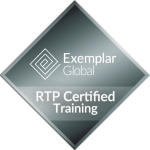Are you concerned about the indoor air quality of your home or workplace? Are you looking for ways to ensure that the air you breathe is safe and healthy? Look no further than ISO 16000! This international standard provides guidelines for measuring and testing indoor air quality, helping businesses and individuals alike to create a healthier environment. In this blog post, we'll explore five important things you need to know about ISO 16000, including its history, benefits, and how to implement it in your own space. So let's dive in!
ISO 16000 is an international standard that sets guidelines for measuring and testing indoor air quality. Essentially, it provides a framework for evaluating the pollutants present in indoor environments such as homes, schools, offices or factories.
The standard outlines different methods to measure parameters like temperature, humidity and concentration of various chemical compounds including volatile organic compounds (VOCs), formaldehyde and particulate matter. These measurements are then evaluated against established thresholds to determine whether the air quality is acceptable or not.
It's important to note that ISO 16000 doesn't dictate specific levels of pollutants that should be present in indoor spaces; rather, it ensures consistency across testing protocols so results can be compared accurately over time. This allows businesses and individuals alike to make informed decisions about how best to improve their indoor environments if necessary.
By adhering to this standard, you can ensure your workspace or home environment meets optimal air quality standards which promote health and well-being.
The International Organization for Standardization (ISO) developed ISO 16000 in response to growing concerns about indoor air quality. The standard was first published in 2004 and has since undergone several revisions, with the latest being released in 2020.
Before ISO 16000, there were no standardized methods for testing indoor air quality. This meant that results from different tests could not be compared or verified. The development of ISO 16000 addressed this issue by providing a set of clear guidelines for measuring various pollutants in indoor environments.
To create the standard, experts from around the world collaborated to identify key pollutants and determine appropriate measurement techniques. They focused on common sources of indoor air pollution such as building materials, furniture, cleaning products, and ventilation systems.
Since its creation, ISO 16000 has become widely recognized as an important tool for ensuring healthy indoor environments. It is used by businesses, governments, and other organizations around the globe to measure and improve their indoor air quality.
The history of ISO 16000 represents a significant milestone in our understanding of how to create healthier buildings and workspaces. By following its guidelines, businesses can take concrete steps towards creating safer and more sustainable workplaces for all employees.
ISO 16000 is a standard that sets guidelines for measuring indoor air quality. Implementing this standard in your business can bring various benefits.
Firstly, ISO 16000 ensures the health and safety of employees by identifying harmful pollutants in the air. It also helps businesses comply with regulations related to indoor air quality.
Secondly, implementing ISO 16000 can enhance brand reputation as it shows commitment towards promoting a healthy work environment and reducing environmental impact.
Thirdly, improving indoor air quality through ISO 16000 can lead to increased productivity among employees. Poor indoor air quality has been linked to headaches, fatigue and reduced cognitive function – all of which negatively affect work performance.
Fourthly, addressing poor indoor air quality through ISO 16000 can reduce absenteeism among employees due to illness associated with poor indoor air quality.
Implementing ISO 16000 may result in cost savings from energy-efficient ventilation systems and reduced maintenance costs resulting from improved HVAC system performance.
Implementing ISO 16000 has numerous benefits for businesses beyond just complying with regulations.
Implementing ISO 16000 in your business can be a game-changer when it comes to indoor air quality and environmental performance. By following the standard's guidelines, you can ensure that your building occupants are breathing healthy air, and your organization is playing its part in preserving the environment.
To implement ISO 16000 in your business, start by identifying areas where you need improvement. Conduct indoor air quality assessments and take action on any issues identified during the evaluation. You'll also want to create an Environmental Management System (EMS) that guides every aspect of your organization’s operations towards compliance with ISO 16000 standards.
Train all employees to understand why indoor air quality matters and how they can contribute positively towards achieving organizational goals related to this subject. Monitor progress consistently through regular audits or evaluations so that necessary adjustments can be made as needed.
Implementing ISO 16000 requires commitment from top management down through every level of an organization but will ultimately result in improved health for building occupants while contributing positively toward conservation efforts for our planet's environment.


